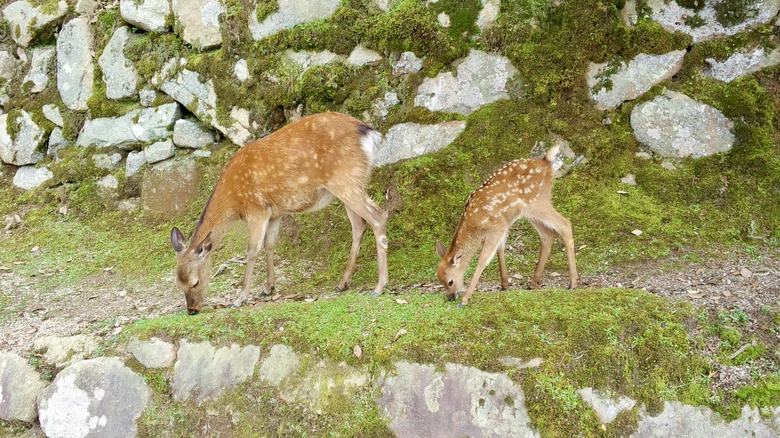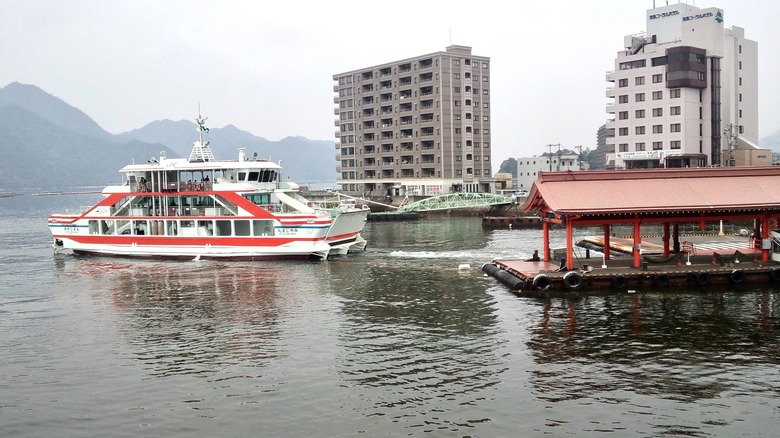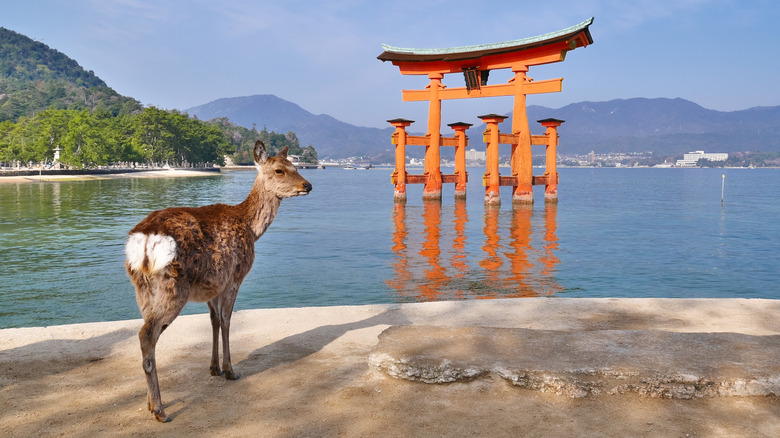One of the more unique experiences you might have while traveling in Japan is visiting a Buddhist temple or Shinto shrine where sacred deer roam freely. In Hiroshima Prefecture, Itsukushima Shrine is famous for its floating torii gate, but to reach this beautiful UNESCO World Heritage Site, you’ll first have to take the ferry to the island of Miyajima. When you disembark the ferry, you might be surprised to have an informal deer welcoming committee greet you, as if they own the island. Miyajima, which has a population north of 1,500, is home to some 500 deer, so there’s about one of them for every three people inhabiting the island.
The island’s real name is Itsukushima, just like the shrine, but because of how closely identified it is with that well-known landmark, it’s colloquially known as Miyajima, or “Shrine Island” in Japanese. In the presence of so many deer, however, you could be forgiven for thinking Shrine Island is really Deer Island. It wouldn’t be the first Japanese island that’s overrun by animals, as visitors to Aoshima (Cat Island) and Okunoshima (Rabbit Island) can attest. The latter island is also located off the coast of Hiroshima, so you could even potentially visit it and Miyajima on the same trip. If nothing else, Itsukushima Shrine is essential — arguably one of the most unmissable tourist destinations in Japan — and you’re likely to see some deer mingling with human tourists here, just as they do east of Hiroshima in the city of Nara.
The deer of Miyajima and Itsukushima Shrine

One thing that sets Miyajima apart from Nara is that its deer aren’t supposed to be fed. On the island, you’ll see signs telling visitors, “To protect its life in nature please do not feed the deer.” Though many tourists might visit Miyajima as a side trip from the city of Hiroshima, it’s actually part of the neighboring city of Hatsukaichi, which has prohibited feeding the animals since 2008.
That said, Miyajima’s deer are still accustomed to being around humans, who had a long history of supplying Bambi with food before 2008. While the deer are mostly tame and friendly, they’re much less shy than wild deer in the forest would be. So, they may walk right up to you and even try to snatch edible-looking things out of your hands or pockets.
It’s only a 10-minute walk from the ferry to Itsukushima Shrine, but when you get there, you may also see deer near the shrine’s renowned torii gate, which gives the appearance of floating at high tide. Miyajima receives millions of visitors every year, and in late 2023, the island implemented a nominal visitor tax of 100 yen (around 67 cents) to help preserve it amid overtourism. If it gets too crowded around the shrine, consider breaking away to explore other parts of the island. On Miyajima, you can also ride the ropeway up to Mount Misen and see a sacred flame that’s been burning for 1,200 years in Reikado Hall.
Things to do on the way to Miyajima

If you’re flying in from abroad, you may land in one of Tokyo or Osaka’s international airports en route to Hiroshima and Miyajima. Either way, the bullet train would take you through the Kansai region, where Nara is located. In Nara, you can see double the deer, with over 1,000 of them wandering around Nara Park and the nearby temple grounds of Todai-ji. Local vendors sell shika-senbei, or deer crackers, which tourists can feed the animals by hand.
If you’re hungry, too, when you get to Hiroshima, the okonomiyaki theme park Okonomimura is a must-visit for foodies. Miyajima specializes in conger eel okonomiyaki and anago-meshi, which puts the eel over rice instead of in a savory Japanese pancake. While the deer still have the run of the island, they’re not necessarily regarded as sacred everywhere in Japan, as one of Mount Fuji’s five lake areas, Motosuko, is known for its venison curry. Suffice it to say, this makes for an odd juxtaposition of travel experiences if you happen to stop off in Motosuko on the way to Hiroshima.
Miyajima is accessible by ferry from Hiroshima Peace Memorial Park, or you can take one of the other local ferries that JR (Japan Railways) operates out of the Miyajimaguchi Passenger Terminal, pictured above. For its part, the Peace Memorial Park is where you’ll find the A-Bomb Dome, the sole structure in the vicinity to survive the atomic bombing of Hiroshima on August 6, 1945.

